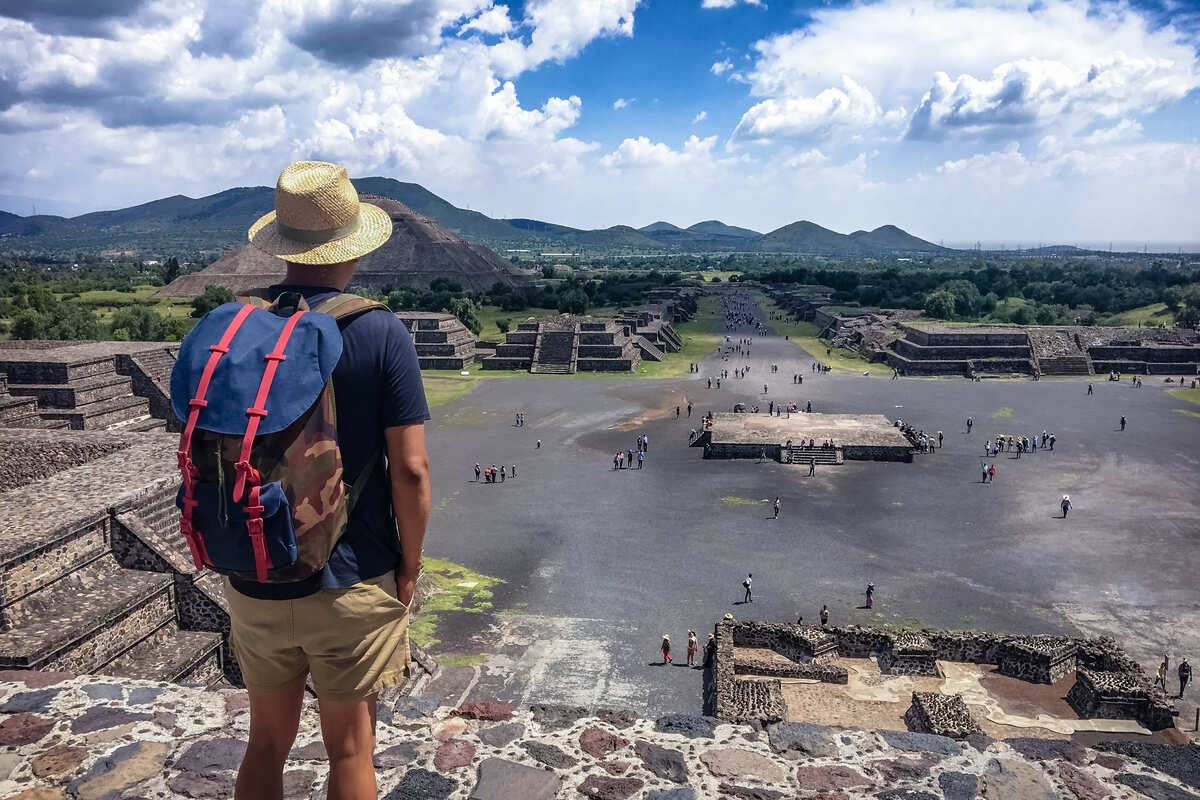How Unsafe Is Mexico In Reality?

We have been covering U.S. travel advisories for Mexico and what they signify for tourists extensively this year. No matter if it’s the typical Riviera Maya hotspots, like the aforementioned Cancun and Tulum, or off-the-beaten-path locations, like San Miguel de Allende, we have now kept track of all security concerns and advancements in the tourism sector.
You would have noticed a significant development recently if you had been paying close attention to our coverage of Mexico: the majority of Americans are unfazed by the U.S. Department of State’s numerous deterring travel warnings, and believe us, there have been quite a few. Actually, it’s projected that they’ll go in large numbers to the Mexican Caribbean this winter.

We have worked relentlessly to disprove the notion that Mexico is unsafe and that, perhaps, crime rates are comparable to those in the United States, going back as far as 2019 at this point. Yes, there may be the occasional shooting, and yes, gang activity is a persistent issue, but then again, that is the situation in any significant metropolitan area.
It is without a doubt not exclusive to Mexico City or Cancun; some could argue that a cursory peek at Chicago’s most recent gun violence statistics should be enough for international organisations to designate the Illinois city as a no-go area. When accidents occur at random and only a small number of tourists are affected, why is Mexico the only country receiving all of the negative coverage and attention?

Kidnapping Alert Based On A Single Kidnapping Case
For instance, despite the fact that the state has only recorded one kidnapping case since the year began, the U.S. Department of State has added “kidnapping” risks to its Quintana Roo caution. While it is true that no such occurrence should be taken lightly and that tourists may occasionally become targets, this is not common enough to call for a formal warning.
In the past, the anti-kidnapping organisation Alto al Secuestro falsely asserted that Cancun’s rate was 0.302 per 100,000 people; once again, falsely, thus even these estimates had been worsened. To compare with another sunny destination, the kidnapping rate in Miami-Danes county is 0.36 per 1,000 people over a typical year.
Is that the only difference between Miami and Cancun? One of them is located on the border’s southern side.

Being aware of this issue, the Mexican government requested that the United States stop listing tourist destinations in travel advisories without adhering to a strict set of standards, despite the fact that the United States government’s usefulness as a source of information for Americans travelling abroad is rapidly dwindling. The evidence is in the data:
The arrival of foreign visitors “had not been affected at this time,” as Tourism Secretary Miguel Torruco confirmed. Mr. Torruco was open about his hopes for the future of the industry while on a promotional tour to Canada, where he showcased Mexico’s brand-new visitor offer, the “wonderful” colonial towns, and the planned Tren Maya.

Mexico Tourism Is Booming In Spite Of Gloomy Advisories
He explicitly declared that Mexico’s tourism industry is in “full recovery,” and that by year’s end, it should receive 42.3 million visitors, which would be just 6% less than the record year of 2019. According to Mr. Torruco, “For the time being, the issue of travel advisories from the United States is not harming tourism in Mexico, which is why global tourism continues to grow.”
13,757,000 million tourists arrived in Mexico between January and August 2022, a 64.7% increase over the same period the previous calendar year. By a wide measure, the United States remains Mexico’s most important market out of these: of the roughly 14 million immigrants, 8,925,000 of them were Americans (Canadians and Colombians spherical up the highest three).

Torruco claims that a number of problems that have already been “overcome” have been “thrown up” in relation to safety, which is still a major concern for visitors. This is partly because of the constant influx of negative information about Mexico. According to our interpretation of the Secretary’s statement, she might possibly be alluding to Mexico’s unfair designation as a dangerous country.
Mr. Torruco continued, “The National Guard was developed with special training, with more delicate tools, and we’re already starting to observe a downward development in many of the crimes.” In fact, security has been stepped up in all major tourist destinations, including Cancun, where beach patrols have become more common.

No Country Takes Tourist Safety More Seriously Than Mexico
An whole post by Travel Off Path outlines five ways that Mexico has enhanced the travel experience for Americans, including increasing police presence in cities to preserve safety and combating taxi frauds. Tourists shouldn’t worry since Mexico is competent or, as the Secretary puts it, is “on the right track.”
To the best of their abilities, the U.S. Department of State strives to inform American citizens about the risks associated with travelling to particular regions. It is a highly regarded department of the American government. This does not imply that their methodology for evaluating risks is always up to date or that it always accurately depicts the situation at hand.

Traveler Alert: Don’t Forget Travel Insurance For Your Next Trip!
↓ Join Our Community ↓
The Travel Off Path Community FB group has all the most recent reopening information, conversations, and Q&A’s taking place every day!

SUBSCRIBE TO OUR LATEST POSTS
Enter your electronic mail deal with to subscribe to Travel Off Path’s newest breaking journey information, straight to your inbox
This article initially appeared on TravelOffPath.com



